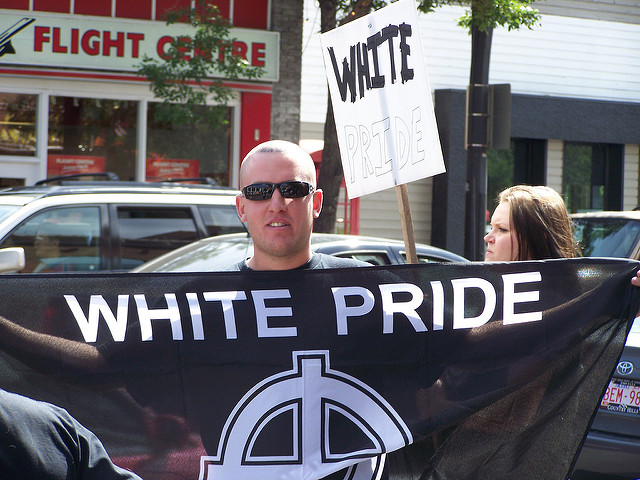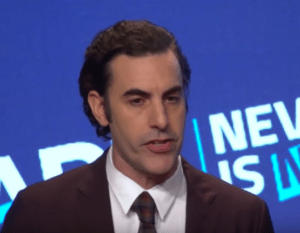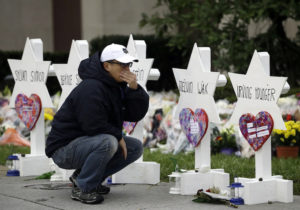Report: In 2018, Hate Groups Are More Popular Than Ever
Over 1,000 are active in the United States, says the Southern Poverty Law Center. Robert Thivierge / Flickr Creative Commons
Robert Thivierge / Flickr Creative Commons
In 2018, 11 people were killed at a synagogue. Two in a Kroger supermarket. Others at a yoga studio. And that was just one week in a year where extremist violence was at its highest in decades.
This year, the number of active hate groups rose for the fourth year in a row, to 1,020 according to a new report from The Southern Poverty Law Center, an organization that tracks extremism in the United States. Hate crime murders, at least 40 in 2018, according to the SPLC, have more than doubled since 2017.
As Liam Stack writes in The New York Times’ coverage of the SPLC report, “That broadly echoes other worrying developments, including a 30 percent increase in the number of hate crimes reported to the F.B.I. from 2015 through 2017.”
It also comes on the heels of similar research from the Anti-Defamation League, which puts the number killed even higher than the SPLC, at least 50. The ADL also emphasized that these murders “were overwhelmingly linked to right-wing extremists,” and not jihadist groups. “White supremacists,” the ADL continues, “were responsible for the great majority of the killings, which is typically the case.”
As for how the perpetrators carried out their crimes, the ADL writes that “Firearms remain the weapon of choice for extremists who kill. Guns were responsible for 42 of the 50 deaths in 2018, followed by blades or edged weapons.”
While, as the SPLC points out, the number of black nationalist groups “[espousing] anti-white, anti-Semitic or anti-gay and anti-transgender views” also grew in 2018, from 233 to 264, their influence and actions paled in comparison to that of white supremacist, right-wing hate groups. As Heidi Beirich, Intelligence Project director at the SPLC writes of the white hate groups, “They, unlike black nationalist groups, have a firm foothold in the mainstream.”
That mainstream, Beirich asserts, includes the Trump administration and its supporters. “The president, aided and abetted by Fox News, continues to push his noxious anti-immigrant and anti-Muslim ideas into the public consciousness,” she says, “fueling fears of a forthcoming white-minority country.”
Before Trump was elected, the number of hate groups had actually fallen in the previous three years. Now, Beirich explained in an interview with the Times, “There are more hate groups, more hate crimes and more domestic terrorism in that same vein. It is a troubling set of circumstances.”
While saying that Trump’s ascendance is a key part of the rise in extremism, Beirich emphasizes that he’s part of a larger ecosystem of hate, telling the Times, “He is a critical aspect of this dynamic, but he is not the only reason why the ranks of hate groups are growing. The ability to propagate hate in the online space is key.”
Your support matters…Independent journalism is under threat and overshadowed by heavily funded mainstream media.
You can help level the playing field. Become a member.
Your tax-deductible contribution keeps us digging beneath the headlines to give you thought-provoking, investigative reporting and analysis that unearths what's really happening- without compromise.
Give today to support our courageous, independent journalists.








You need to be a supporter to comment.
There are currently no responses to this article.
Be the first to respond.